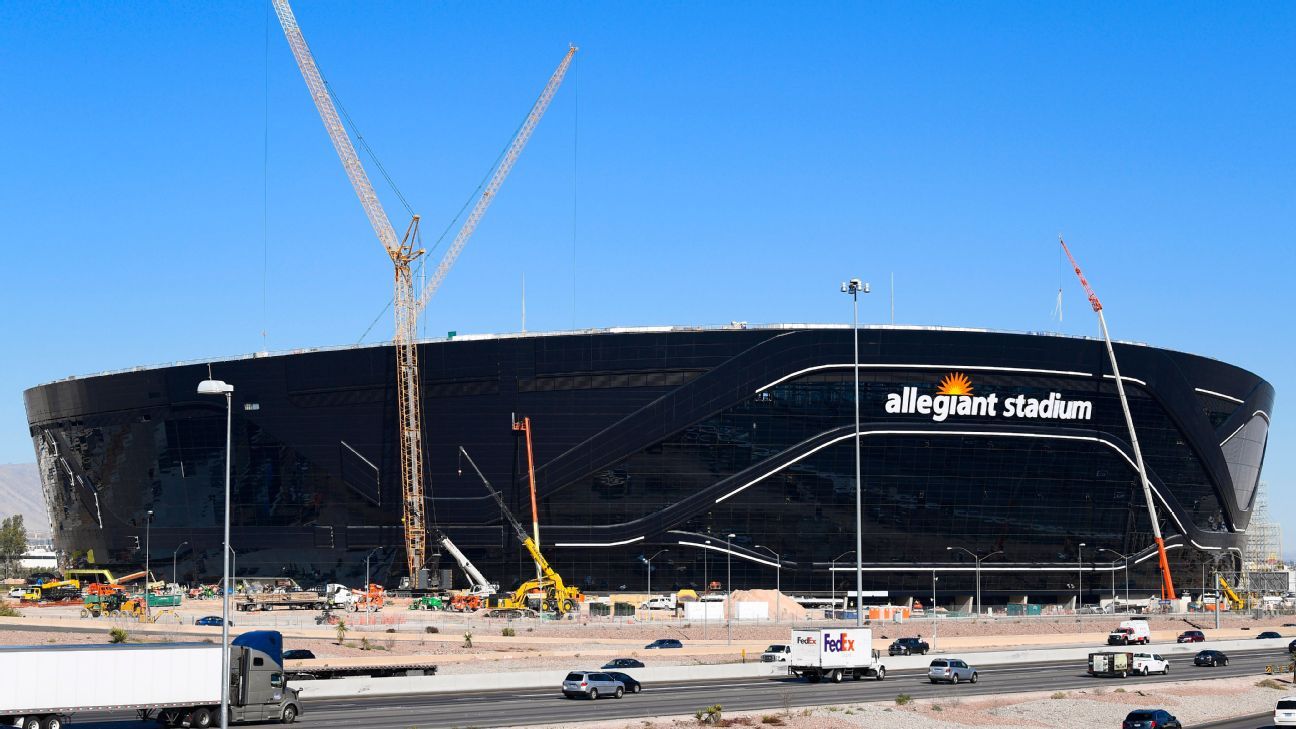Construction on Allegiant Stadium, the future home of the Las Vegas Raiders, remains on schedule and on budget despite two on-site workers testing positive for COVID-19 and the economic impact caused by the coronavirus pandemic, a stadium official told ESPN.
The $1.97 billion stadium is expected to be completed July 31, with an opening event tentatively scheduled for Aug. 16. The NFL season is scheduled to kick off Sept. 10.
On Wednesday, stadium construction firm Mortenson-McCarthy announced that a second worker had tested positive for COVID-19. The company said in a release that the worker had not been in close contact with other employees because of social distancing protocols at the construction site. Another construction worker at the stadium tested positive in March.
Nevada Gov. Steve Sisolak has ordered all non-essential businesses to close, including the state’s casinos, through April 30. Sisolak has deemed construction an essential business, and work on the stadium continues.
“In light of the immediate crisis, there is heightened concern regarding worker safety, labor volume and timing of materials shipments,” Jeremy Aguero, a spokesperson for the Las Vegas Stadium Authority, told ESPN via email. “Mortenson and McCarthy have put worker safety at the forefront of the project since day one; they continue to do so today. Labor volumes remain on track with expectations for this period in the project’s development cycle with as many as 2,000 workers on site each day and materials shipment are generally on track. Most materials are stored locally at this point.”
The public investment into the stadium development is capped at $750 million, which is generated from hotel tax revenue and proceeds from bonds issued by Clark County on behalf of the Las Vegas Stadium Authority.
“The Authority’s bond reserves currently stand at roughly 18 months, meaning that if room taxes were to fall to zero and stay there for 18 months, the Authority would still have the ability to meet its obligations,” Aguero said. “Under such a scenario, this would take us through the end of calendar year 2021.”
